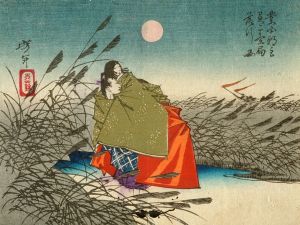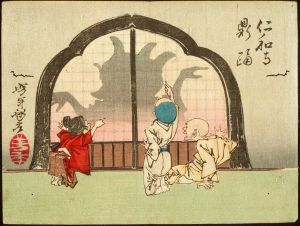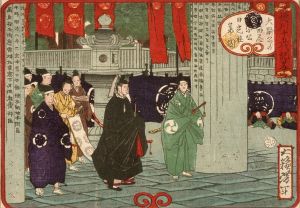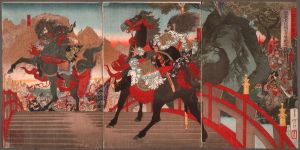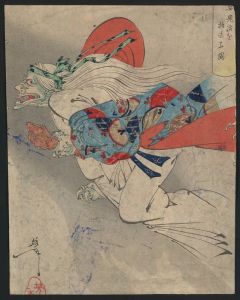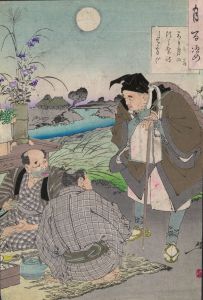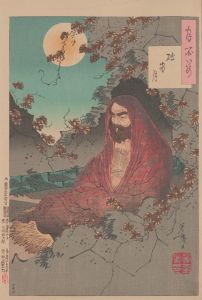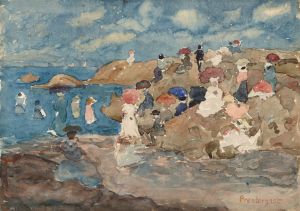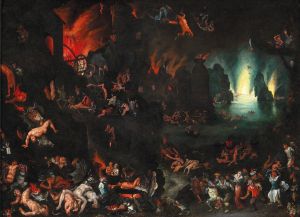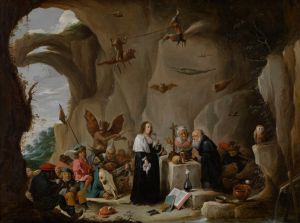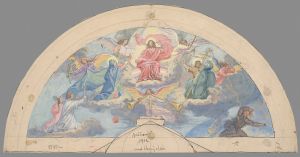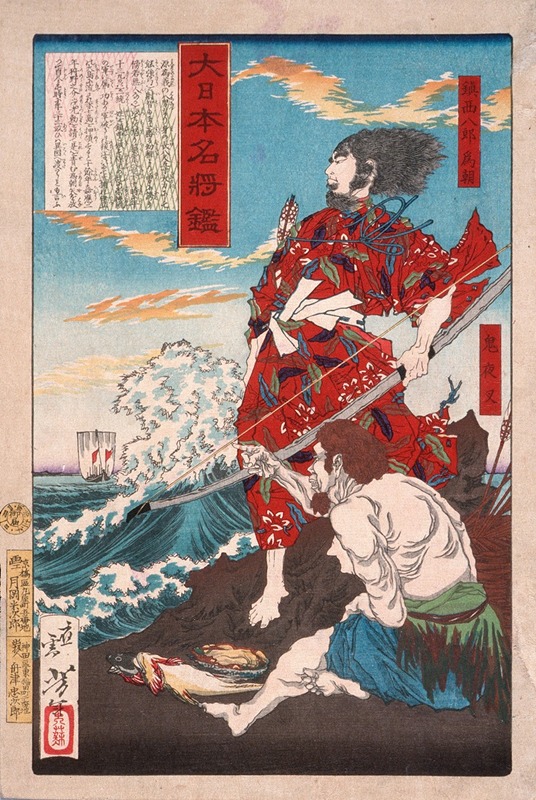
Chinzei Hachirō Tametomo and Oniyashi on a Beach
A hand-painted replica of Tsukioka Yoshitoshi’s masterpiece Chinzei Hachirō Tametomo and Oniyashi on a Beach, meticulously crafted by professional artists to capture the true essence of the original. Each piece is created with museum-quality canvas and rare mineral pigments, carefully painted by experienced artists with delicate brushstrokes and rich, layered colors to perfectly recreate the texture of the original artwork. Unlike machine-printed reproductions, this hand-painted version brings the painting to life, infused with the artist’s emotions and skill in every stroke. Whether for personal collection or home decoration, it instantly elevates the artistic atmosphere of any space.
"Chinzei Hachirō Tametomo and Oniyashi on a Beach" is a woodblock print by the renowned Japanese artist Tsukioka Yoshitoshi, who was active during the late Edo and early Meiji periods. Yoshitoshi is celebrated for his innovative and dynamic ukiyo-e prints, which often depicted historical and legendary figures, as well as scenes from Japanese folklore and mythology.
This particular artwork features the legendary samurai Chinzei Hachirō Tametomo, a historical figure from the late Heian period. Tametomo was known for his exceptional archery skills and is often depicted in Japanese folklore as a heroic and almost mythical figure. According to historical accounts, he was a member of the Minamoto clan and played a significant role in the Hōgen Rebellion, a conflict that took place in the mid-12th century. Despite his prowess, Tametomo's life was marked by conflict and eventual exile.
In Yoshitoshi's print, Tametomo is portrayed on a beach, confronting Oniyashi, a figure whose identity is less clear in historical texts but is often interpreted as a demon or adversary. The scene captures a moment of tension and drama, characteristic of Yoshitoshi's style, which frequently emphasized the emotional and psychological depth of his subjects.
Yoshitoshi's work is noted for its vivid use of color and intricate detail, and this print is no exception. The composition likely reflects the influence of Western art techniques, which were becoming increasingly popular in Japan during the Meiji period. Yoshitoshi was known for his ability to blend traditional Japanese artistic elements with these new influences, creating works that were both innovative and deeply rooted in Japanese culture.
The print is part of Yoshitoshi's larger body of work that often explored themes of heroism, conflict, and the supernatural. His interest in these themes can be seen as a reflection of the broader cultural and social changes occurring in Japan during his lifetime, as the country transitioned from a feudal society to a more modern state.
Yoshitoshi's prints, including "Chinzei Hachirō Tametomo and Oniyashi on a Beach," are highly regarded for their artistic merit and historical significance. They offer a window into the cultural imagination of Meiji-era Japan and continue to be studied and appreciated for their contribution to the ukiyo-e tradition.
This particular print, like many of Yoshitoshi's works, is valued not only for its aesthetic qualities but also for its storytelling. It encapsulates a moment of legendary history, bringing to life the tales of Japan's past through the medium of woodblock printing. As such, it remains an important piece for both art historians and those interested in Japanese history and folklore.





